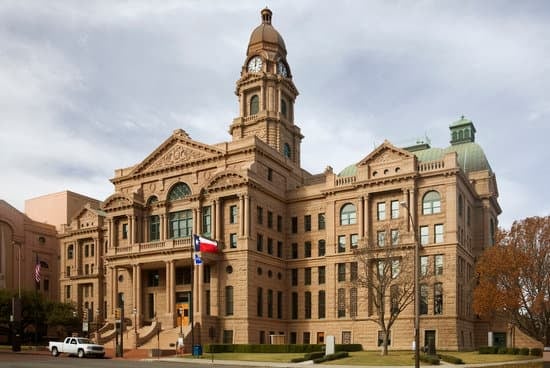
Texas has over 250 active courthouses, and many retired structures repurposed into museums, art galleries, and visitor centers. The region's rich history is mirrored in the design of these incredible buildings.From Beaux-Arts to Romanesque Revival, there’s a vast array of styles worth checking out. If you’d like to see them, use this guide to learn about some of the most iconic Texas courthouses.
Bexar County Courthouse
Located in the heart of San Antonio, the Bexar County Courthouse is the oldest Texas courthouse still in use today. It’s also the largest, boasting a truly impressive 43,560 square-foot layout.
Architect J. Riely Gorden designed this distinctive building in Romanesque Revival style in the late 1800s. Its cornerstone was placed in 1892, but construction didn't finish for another five years.
This time investment certainly paid off, resulting in a magnificent granite and red sandstone structure. The courthouse has undergone several major remodels since then, with each one adding to the function and beauty of the space.
Comal County Courthouse
The Comal County Courthouse is another Romanesque Revival masterpiece, located in New Braunfels, Texas. Six designs were in the running for the creation of this courthouse, with Architect James Riely Gorden coming out on top. His plans were put into action soon after for the completion of the courthouse in 1898.
Robust materials, like native limestone, pink granite, and slate roof tiles, ensured that this courthouse would withstand the test of time. These materials also made crafting intricate details like ornate friezes and moldings possible. Stained glass windows add a touch of artistic splendor, lighting up the interior in a kaleidoscope of colors.
Tarrant County Courthouse
The Tarrant County Courthouse sits on a bluff just above the Trinity River in Fort Worth, Texas. Frederick C. Gunn and Louis Curtiss dreamed up its stately design in 1893, borrowing inspiration from the Texas State Capital. The resulting building has an uncanny resemblance to that structure, only lacking its clock tower.
The pink granite perfectly complements the Renaissance Revival style and gives the courthouse a regal appearance. Stained glass windows throughout add to the building’s majestic aura, especially on sunny days when they light up the interior in a rainbow of colors.
Harris County Courthouse
The Harris County Courthouse stands prominently in Downtown Houston, Texas. Lang and Witchell Architects designed the building in 1910 to mark the city’s commitment to justice and artistry. It’s a prime example of the Beaux-Arts architectural style, characterized by grand facades, columns, and intricate details throughout its six-story design.
Although impressive throughout, the most notable features are its iconic dome standing tall above the city and its dual-story courtroom with balcony seating. Within that courtroom, tall windows span the space, adding even more flair with their copper spandrel panels.
Parker County Courthouse
The Parker County Courthouse is set in the Courthouse Square in Weatherford, Texas. It’s the fourth in a long line of courthouses built in that space. Wesley Clark Dodson developed this final design in the mid-1880s, adding to his ever-growing portfolio of Texas courthouses.
Like many of Dodson's other designs, he went with the Second Empire architectural style, creating a three-story limestone marvel. The building has elaborate features at every corner, including stone pilasters, arched windows, and a clock tower. Its exterior remains original, but extensive interior restorations have occurred through the years.
All these courthouses still stand tall today. However, they’re much more than just buildings. They give insights into the history that’s happened there and the people who’ve walked their halls. As you visit each one, reflect on how each brick, column, and ornate detail holds stories of justice to get the full experience.



